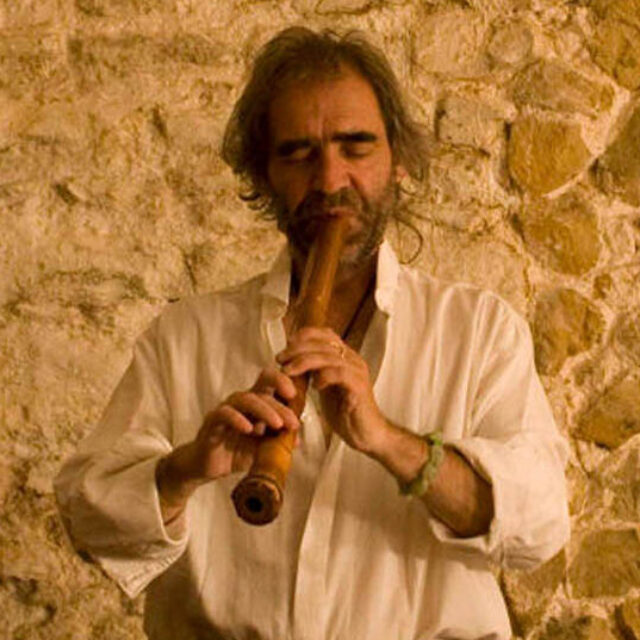A Czech leading shakuhachi player, composer and musicologist and the cofounder of the International Shakuhachi Festival Prague
Doc. Vlastislav Matoušek PhD. studied composition and post-gradual courses in Musical Theory at the Faculty of Music at the Academy of Performing Arts in Prague, where he received his Ph.D. degree in theory of composition and where he has been teaching ethnomusicology since 1991 . As a fellow of Japan Foundation he studied shakuhachi playing with the shakuhachi master Kifu Mitsuhashi and Japanese Traditional Music at Prof. Yamaguchi Osamu in Japan (1996) for six months.
As a soloist concert performer he mainly plays honkyoku – traditional pieces for Japanese bamboo flute, shakuhachi. He is an art-director and a conductor of his contemporary music Ensemble 108 Hz which presents experimental music and his own compositions for voices and other exotic and folk instruments from his personal extensive collection, often in combination with electronic music. www.shakuhachi.cz
ISFP 2025 ABSTRACT:
Choshi – Objective Formal Structure
Motto:
“Choshi is a piece that every shakuhachi player must be able to play safely and correctly from memory, even if they have just been awakened from the deepest sleep.”
(Mitsuhashi Kifu 7.8.1996)
Choshi exists in many versions, often differing in minor details. A comparison of the most commonly used notations of this piece has revealed a number of interesting facts.
Taizan Higuchi (1856-1914) after the abolition of the Fuke sect became the 35th Kansu – the main instructor of shakuhachi playing of the renewed Myoanji tradition in Kyoto. I have been studying his notations for many years. Given his position, the importance of his notes and at least 150 years of their existence, I consider them a key source for understanding the authentic form of Fuke Honkyoku of the late 19th century.
At different stages of his life, he wrote down the shakuhachi Honkyoku (Taizan ryu) pieces 3 times, some only 2 times. To my surprise, I found that, unlike most later writings, he always consistently distinguishes HaRo from Ro and TsuRe from Re !
Choshi is written twice in the manuscript. The original writings – phrases (always consistently in one breath) are usually separated by a space. They are written in columns, from right to left, one after the other, usually without division according to the boundaries of blocks (partial formal structures).
After editing according to the divisions of the sub-structures, the result is a notation from which the musical form of the composition Choshi is clearly visible at first glance .
Understanding the actual formal structure makes it much easier to remember and perform a composition.
Choshi
Form: Variation A1 A2 A3 and (code)
“Tonality”: Ro
All 4 parts start with TsuRe! They all end with RoRo!!! Which is not very obvious from the original notation.
Choshi
Tonality: Ro
Formal structure: Variations – A1 (6 breaths=phrases) A2 (5 b) A3 (5 b) a4 (2 b) as a coda.
18 Phrases = 18 Breaths (Phrase as a Sui Dan)
All 4 parts A1 A2 A3 a4 – begin TsuRe! All Parts ends RoRo.
